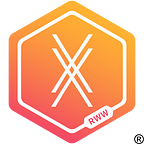The IoT’s Industrial Age, IoT Democratization on the Horizon, and Other Things I Learned at the IoT Tech Expo
By John Cutter
Late last year I attended the IoT Tech Expo held at the Santa Clara Convention Center. The two-day event brought together esteemed IoT industry professionals and showcased new use cases, trends and innovations ranging from novel ways to develop applications for the IoT to the emerging multi-cloud paradigm and the democratization of the IoT. Here are some of my takeaways from the conference:
We are still in the “Industrial Age” of the IoT
Though the expo was full of inspiration for possible IoT applications, the technology itself is still in its early stages of development, particularly in terms of consumer-facing applications. At the event, we saw an intriguing diorama of a smart city by ARM that demonstrated the potential for smart cities in our future. However, current existing consumer applications feature 1:1 hardware connections rather than taking advantage of a true network of things that would allow for a smart city to exist. At the expo, I observed that the enterprise is facing a similar problem: the potential of the IoT is not realized beyond 1:1 device connections. This current era of the IoT is comparable to the “Industrial Age,” when the world began moving from hand tools to machines. Today, IoT infrastructure is helping the world move from “dumb” household items to smart, interactive and connected households. Like the coal-powered factories and steam locomotives that laid the foundation for the modern factories and advanced cars of today, the IoT is gaining a framework to build upon so that we can someday power a full-fledged smart city.
Breaking technology silos will take us into the next age of IoT
While at the IoT Tech Expo, I noticed that there were three other technology conferences taking place on the same day in parallel. The other events were related to big data, crypto and AI. Just like these different technologies have their own different conferences, they have been operating in silos — yet hopefully soon there will be an event that puts all of these technologies together — especially because they intersect to create a seamless IoT ecosystem.
We need to continue having high-level conversations across multiple technology domains since it is only together that we will be able to catapult the IoT out of its current “Industrial Age.”
IoT is still inaccessible to the masses
Walking around the expo, there were so many conversations around protocols, the right hardware to use, the right use cases and where it will all fit together. Due to the infancy of IoT technology, a standard vernacular has not yet been established across the industry, which does not allow for high-level discussion among colleagues. Even experts in the field have left much of the language surrounding IoT technology undefined.
Over time, the democratization of IoT technology will allow IoT best practices to be developed and further create a cohesive and pervasive understanding of the technology and its applications. This democratization and creation of best practices begins with educating people beyond Silicon Valley. As we make this technology more accessible, the discussions and action that follows will lead to the hockey-stick growth of the industry.
At Xperiel, we’ve created the first and only easy-to-use graphical programming language for the IoT, called Pebbles™ that gives anyone, regardless of technical prowess, the ability to create applications that transcend device and operating system siloes. We’re eager to see what new IoT innovations will be built using Pebbles™ and how these new applications will further enhance the human experience.
Multi-cloud solutions will become the norm
The cloud commands a lot of attention these days, with industry giants like Amazon, Microsoft and Google offering cloud solutions. However, while each cloud offering may be the perfect fit for certain use cases and workload, it doesn’t make it the perfect fit for others. As data portability technologies become prevalent, companies will begin taking advantage of multi-cloud solutions to operate heterogeneous workloads across clouds in a unified fashion. This will require communication, collaboration and even sharing of resources between the major players in the industry.
IoT solutions especially will need to be operated on multiple cloud systems. The era of things is and will continue to be complicated, and multi-cloud solutions will be able to help. In fact, 45.92 percent of companies reported that one of the top challenges they face when scaling for IoT operations is the need for highly specialized and custom solutions. It is imperative that we build these collaborative systems to work together from the ground up, or they will become massive silos that will be impossible to unify for the common good of technological progress.
Looking Ahead
At the IoT Tech Expo, our CEO Alex Hertel spoke about the unifying operating system for the IoT is sorely missing and still requires. To move the IoT into its next evolution, Xperiel has built an application layer that connects a true network of things, across everything that speaks its own unique “language.” Our technology enables the future of the IoT, and we can’t wait to see what’s in store whether it’s planning for full-fledged smart cities or implementing IoT curriculum in schools.
— —
For more information on the work at Xperiel is doing in the IoT, check out our Alex’s take on Operating systems for the IoT on the IoT Tech Expo blog, produced in conjunction with his talk at the IoT Tech Expo. Connect with us at Xperiel.com or on Twitter and Linkedin.
